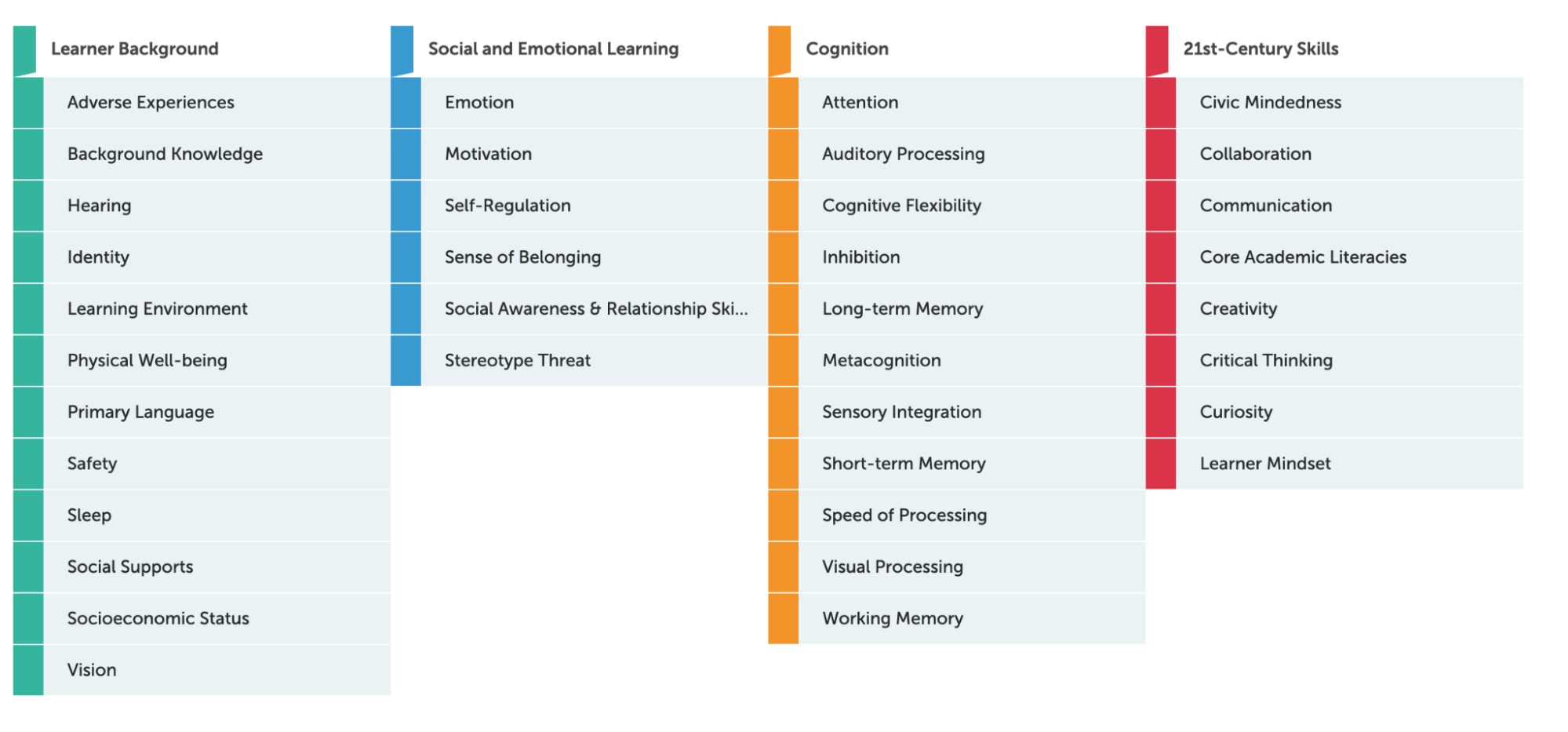
In our first blog post, Six Attributes for Portrait of a Powerful Graduate, we shared an analysis of 69 Portraits of a Graduate from districts across the United States. We revealed six categories that capture 90 percent of attributes most important to districts nationwide (Figure 1).
While districts across the nation agree that these six skill sets are essential for learners, they face challenges in operationalizing them. Each domain is dispositional, universal, and interconnected, so it is difficult to connect them to curriculum and pedagogy. They also do not directly correlate to widely-used methods of assessment and credentialing, including grades and standardized tests.
Digital Promise has developed strategies to support districts to operationalize their portraits.
How Pathways and Pedagogy Make Graduate Portraits More Powerful describes how Portrait of a Graduate skill sets can be viewed as Thinking Dispositions, as defined by Project Zero, broken down into three elements: ability, inclination, and sensitivity. Cultivating inclination and sensitivity, in addition to ability, is essential for school leaders to consider as they work to operationalize the attributes in Portrait of a Graduate. Digital Promise has leveraged two approaches, Integrated Learning Pathways and Whole Child Pedagogy, to support students to develop inclination and sensitivity in choosing to apply Portrait of a Graduate skill sets when applicable.

Figure 2. Integrated Learning Pathways and Whole Child Pedagogy support students to develop and use Portrait of Graduate skill sets
Integrated Learning Pathways help students find opportunities (build sensitivity) to apply transferable skills in any context. In the blog post, How Learning Pathways Bring the Portrait of a Graduate to Life, we describe our approach to developing system-wide, K-12 learning opportunities that are consistent across classrooms, cumulative from year to year, and competency-based.
Whole Child Pedagogy helps students build confidence, value, and joy (inclination) in their skills through engaging and relevant learning experiences. The blog post, Portrait of a Learner: How Backwards Design Can Be a Pathway for Success describes our new Portrait of a Learner (POL) model on the Learner Variability Navigator (LVN), a free and open source tool, that showcases how research-based factors, such as sleep or motivation, work together to affect learning (see framework below). Understanding how these attributes are developed and intertwined is critical to facilitating whole-child pedagogies to support Portrait of a Graduate dispositions.

Figure 4. Whole learner framework depicting key factors of learner variability from the Learner Variability Navigator (LVN)
Portrait of a Graduate dispositions, such as “creating to solve and share,” do not directly correlate to current methods of assessment and credentialing, including grades and standardized tests. The blog post, How to Credential Your Portrait of a Graduate, summarizes how student-level competency-based digital badges (micro-credentials) and interoperable data infrastructure (e.g. Learning and Employment Record (LER) technologies) can support Portrait of a Graduate by enabling students, teachers, and community members to recognize skills and connect them to opportunities in the workforce and/or postsecondary education.
Our Portrait of a Graduate initiative aims to work with teachers and leaders to identify key points for curriculum integration, implement whole-learner pedagogy, and recognize skills in ways that increase access to postsecondary learning and employment opportunities, as illustrated in Figure 5.
With these strategies, PoG dispositions can amplify and extend districts’ existing initiatives and result in more powerful learning for children. Over the next several months, we will elaborate on our approach to operationalizing Portrait of a Graduate in a series of white papers that highlight district partners that have leveraged these strategies to implement PoG in their contexts.
To receive timely updates on this work, please subscribe to our Action Report newsletter.

We want to hear from you!
Please take this 5-minute survey and help us serve you better.
